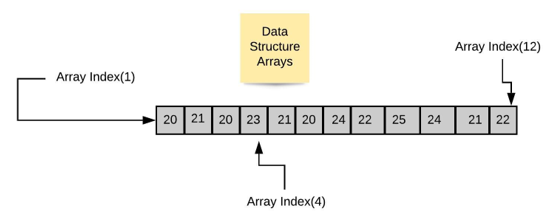Data Structures Tutorial
Home Data Science Data Science Tutorials Data Structures Tutorial
Basics
Data Structure Tutorial
The data structure is the concept of data being stored and organized in the computer memory and the process of retrieving the data from the data structures. It significantly impacts the performance of data processing for various programming use cases. The data structure is the logical representation of data in the memory.
There are several categories available for data structure and implemented in computer programming. The programming languages support the use of several data structure methodologies while designing and development the code. The data structure is the basic component for complex and multiple data processing implementations.
Why do we need to learn Data Structure?
- We need to learn data structure to apply computer science best practices for developing efficient business solutions using computer programming.
- The data structure implementations need a good understanding of the relevant concepts and decisions to apply the best fit data structure for the particular requirements.
- The data structure knowledge is an added advantage for any software professional who deals with architecting, designing, developing, and optimizing applications using computer programming.
- Data structure helps the programmers to develop effective and reliable solutions.
Applications of Data Structure
- Data structure applications are implemented in several industry-specific solutions through sand and advanced programming. The data structure is mainly divided into two categories such as primitive and non-primitive types.
- The primitive type data structure is also known as data types in most programming languages, such as integer, character, and double types. These primitive data structures are useful to store the single-variable data in the run time of the applications.
- The non-primitive data structure is the advancement of computer science which is used to store and process multiple data in applications.
The popular non-primitive data types are:
- Arrays
- Linked list
- Stack
- Queue
- Binary Trees
- Graphs
- These data structures are applied while developing and using computer algorithms for software solutions and product development.
- The data structures are closely associated with the computer algorithms, which are applied through programming like C and object-oriented programming like Java, C++, and Microsoft C# programming.
- Moreover, the data structure extends with additional features, capabilities, and the way of interacting with the data structure based upon the programming language.
Example
We will discuss Arrays as an Example of data structure, a mostly used data structure through the programming languages. The array is a non-primitive linear data type that holds similar data types and is managed through an array index.
Following is a conceptual view of an array data structure containing the age of students enrolled for a course.
The above example of the array shown contains an integer variable for a student's age in an array declared as the ‘age_Students’ array. It stores 12 students’ age.
The index position will be used to search and retrieve the array element. For instance, to access the 4th element of the array, the data structure will be age_Students[4] which will return the value of age 23 from the array. The array index starts with 0 or 1 as a base index depending upon the programming languages.
Prerequisites
The basic computer programming techniques and understanding of computer memory concepts.
Target Audience
The target audience for data science tutorials is computer science students, software professionals, product architects, and any IT professional who wants to learn data structure for career enhancement.
